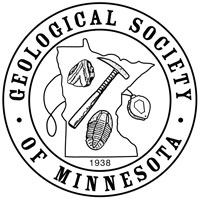Seminar Lab Date:
Seminar Lab presenter:
Seminar Lab Subject:
Seminar Lab Location :
Virtual lecture 7:00 PM CT.
Participation instructions will be mailed to GSM members. If you are not a member of GSM and wish to attend this free seminar online, register as follows by 12 noon CT Monday, April 25: Go to the Contact menu above and select "Ask GSM". In the form that appears, enter your name and e-mail address. Enter "Apr 25 lecture" in the subject line. In the message body, please enter the city and state or country from which you will view the seminar. You will receive instructions by e-mail prior to the lecture. Check your spam folder if the instructions do not appear in your in-box at least one hour prior to the lecture.
Seminar Lab Details:
Abstract: This presentation will highlight the recent findings of a buried meteorite impact in Inver Grove Heights, Minnesota. Meteorite impact structures are recognized as an important geologic process producing major and widespread geological effects. Although millions of impact craters are known on Mars and the Moon, to date only about 200 craters are recognized on Earth. This is because only one-third of the Earth’s surface is solid and that third is subject to powerful geologic processes continuously reshaping it. Minnesota has no other known impact structures and the Inver Grove structure almost escaped detection. Subsurface geologic samples from drilling are housed and cataloged by the Minnesota Geological Survey for routine stratigraphic identification and geologic mapping. Investigation of several of these sample sets during the Dakota County Geologic Atlas mapping project revealed as much as 575 feet (175 m) of anomalous sand, silt, and shale sediments with some intervals containing abundant cloudy and fractured quartz sand grains. The samples are from an area entirely buried by several hundred feet of glacial deposits within a deep buried channel carved into the surrounding bedrock layers adjacent to the Mississippi River. Parts of the anomalous sequence of sediments are similar to local Cambrian and Precambrian stratigraphic layers elsewhere but are out of the usual stratigraphic order and in places turned entirely upside-down. Microscopic investigation has resulted in the detection of shocked metamorphic features including planar deformation features (PDFs) in the fractured quartz grains confirming the impact origin of this structure. Stratigraphic data near the site align with current models of crater formation from similarly sized structures in layered sedimentary target rocks indicating this is a complex crater, possibly as much as 7.5 km wide with apparent terraced rims and a central uplift. Because it is buried and eroded, many detailed characteristics of this structure remain a mystery. The current age estimate is upper Cambrian (~490 Ma) based on the age of the overturned strata and the apparent lack of carbonate from the overlying Prairie du Chien Group in the samples. This would make it older than craters found in surrounding states which are Ordovician and younger. This site deserves further attention and study because it lies beneath a populated area with many industrial and residential activities at the land surface where groundwater is used for drinking water needs.
Biography: Julia Steenberg is a geologist and project manager at the Minnesota Geological Survey (University of Minnesota) who focuses on the sedimentology, stratigraphy, and hydrogeology of Paleozoic and Mesozoic bedrock in Minnesota. Since starting at the survey in 2008 she has been heavily involved in the County Geologic Atlas mapping program and authored many bedrock geologic maps across the state. Julia grew up in the Twin Cities area, and holds a M.S. in Geosciences from Idaho State University and a B.A. in Geology from Gustavus Adolphus College.
